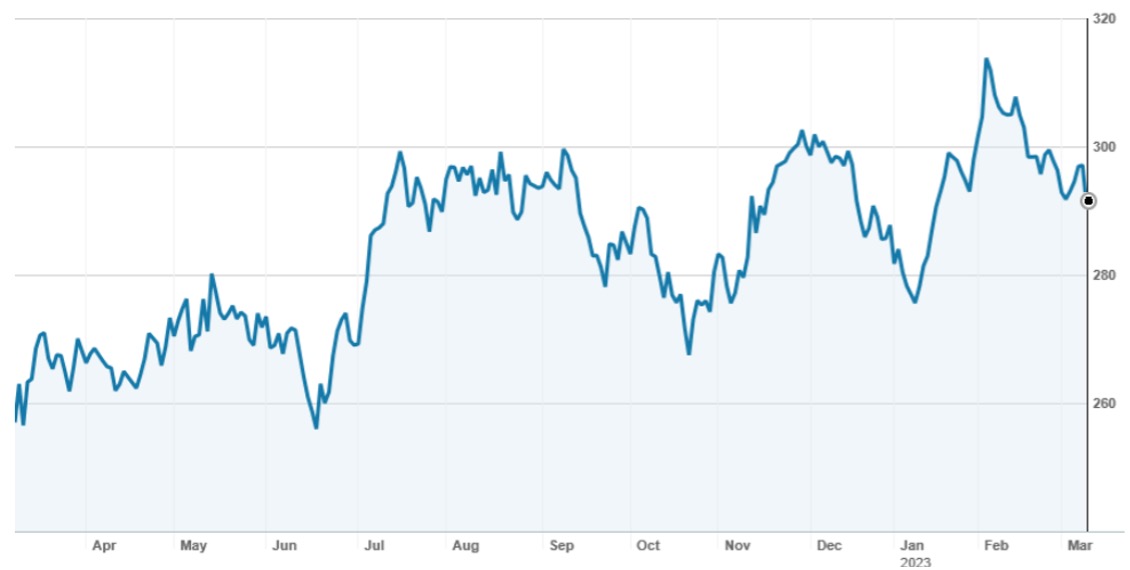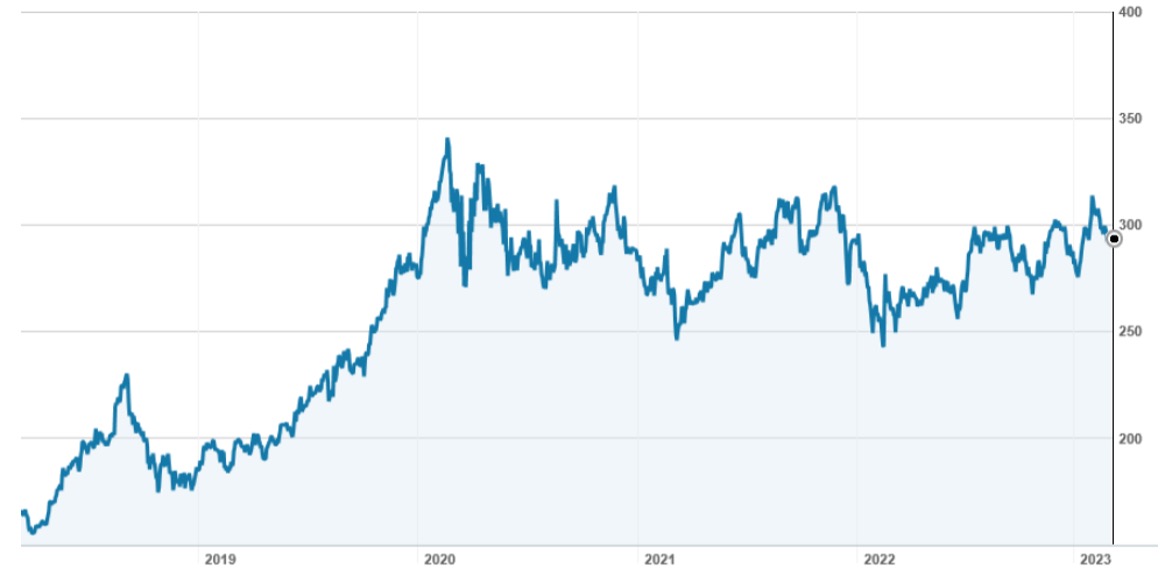I’m losing count as to how many times CSL has bounced off $300. The charts below, a 1-year chart and a 5-year chart, suggest it is probably not as many as I think, but $300 does seem to be a big barrier for the stock.
The most recent failure came after the release of CSL’s first half profit results. In the days following, the stock traded up to a high of almost $308.00, before succumbing to selling pressure and easing back. On Friday, it closed at $286.05.
CSL – one year chart (3/22-323)

CSL – five-year chart (3/18-3/23)

Source: nabtrade
So why can’t it get through $300. And what could get it there?
I think the answer to the first question is that CSL is perceived to be quite expensive by global standards, and in an environment of rising interest rates, the healthcare sector has been out of vogue.
On a forecast basis, CSL is trading on a multiple of around 32.2 times forecast FY23 earnings and 25.3 times forecast FY24 earnings. This compares to the average of the stocks that make up the US S&P 500 healthcare index, which was around 17.0 times at the end of February. On a trailing basis, which is arguably a more reliable comparison, S&P says the average for the US market is around 22 times whereas CSL is closer to 40 times.
CSL has historically traded at a higher multiple than the US average, in part due to its impressive growth record, and also because the US index includes “utility” style health stocks (hospital operators etc) and consumer facing companies (e.g., Johnson & Johnson).
Although healthcare was one of the better performing sectors last year (in calendar 2022 it only lost 1.9% compared to the S&P 500’s return of -18.1%), performance in 2023 is very different. To last Friday, the healthcare sector was down a fraction under 9.0% while the broader US market was up 0.6% for the year. Where the US market goes, we tend to follow.
For the half year ending 31 December, CSL grew underlying profit by 10% at constant currency to US$1.82bn. This included five months’ contribution from Vifor Pharma (now called CSL Vifor), a global leader in the treatment of renal disease and diseases of iron deficiency. Adjusting for this and one offs from Covid, operating performance was up 8%.
Revenue growth was more impressive – up 25% overall, with the blood plasma division (CSL Behring) up 11% and the influenza vaccines business (CSL Seqirus) showing growth of 9%.
Looking ahead, CSL reaffirmed profit guidance of between US$2.7bn and US$2.8bn for the full year (representing growth of between 13% and 18% at constant currency), on revenue growth of 28% to 30% at constant currency. (Because the influenza business is seasonal, profit is weighted to the first half).
Plasma collections were up 36% on the 1H22 and 10% higher than pre-pandemic levels. Given the lead time between collection and product sale, this bodes well for the company’s profit in FY24. CSL also has three product launches in FY23 – HEMGENIX, which is the first gene therapy for haemophilia B, BERINERT (immunology) and INJECTAFER (CSL Vifor).
If CSL can deliver on guidance (it has made a habit of surprising on the upside), continue its impressive record of product innovation and efficiently grow plasma collections, it is well positioned to outperform and bust through the $300 level.
What do the brokers say?
The brokers are bullish on CSL, with a consensus target price of $335.99, 17.5% higher than Friday’s close. The range of target prices is a low of $315.00 from Ord Minnett through to a high of $350.00 from Citi. According to FN Arena, there are 5 “buy” recommendations and “1” neutral recommendation.

Bottom line
I am with the brokers. CSL will eventually “crack” $300 and stay above there. My sense is that this will occur in 2023 and before year’s end, CSL will be testing its ore-Covid high.
Under $290 will prove to be good buying. Accumulate.
Important: This content has been prepared without taking account of the objectives, financial situation or needs of any particular individual. It does not constitute formal advice. Consider the appropriateness of the information in regards to your circumstances.

